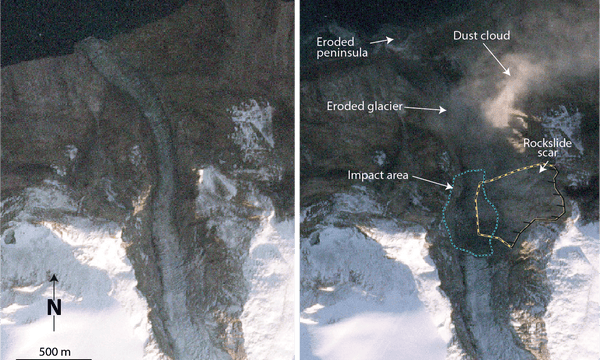"Informed AI News" is an publications aggregation platform, ensuring you only gain the most valuable information, to eliminate information asymmetry and break through the limits of information cocoons. Find out more >>
Global Seismic Resonance Following Greenland Mega-Tsunami
- summary
- score

In September 2023, a landslide in Greenland triggered a mega-tsunami, causing the entire Earth to vibrate for nine days. The collapse of a 1,200-metre mountain peak into Dickson Fjord was due to a melting glacier, a result of global heating. The initial wave reached 200 metres, with seismic waves resonating through the planet for over a week.
This event was unprecedented, initially baffling researchers. It took 68 scientists from 40 institutions in 15 countries to identify the cause. The landslide sent 25 million cubic metres of rock and ice into the fjord, generating waves that reduced to seven metres within minutes but continued to send seismic waves globally.
The tsunami destroyed an ancient Inuit site and damaged a research station on Ella Island, 70km away. A nearby cruise ship narrowly avoided disaster. The event highlighted the rapid impacts of climate change, showing that even seemingly stable regions are vulnerable.
The study, published in Science, used high-resolution computer simulations to model the tsunami, matching the observed seismic data. This breakthrough in tsunami modelling opens new avenues for understanding and predicting such events.
As global temperatures rise, similar incidents are expected to become more common. This event underscores the far-reaching effects of climate change, demonstrating how it can impact the entire planet within hours.
| Scores | Value | Explanation |
|---|---|---|
| Objectivity | 6 | Comprehensive reporting and in-depth analysis. |
| Social Impact | 5 | Widespread discussion, significant public opinion influence. |
| Credibility | 6 | Verified independently, confirmed by multiple sources. |
| Potential | 6 | High potential for similar events due to climate change. |
| Practicality | 5 | Highly practical, widely applied in practice. |
| Entertainment Value | 3 | Some entertainment value, attracts a portion of the audience. |